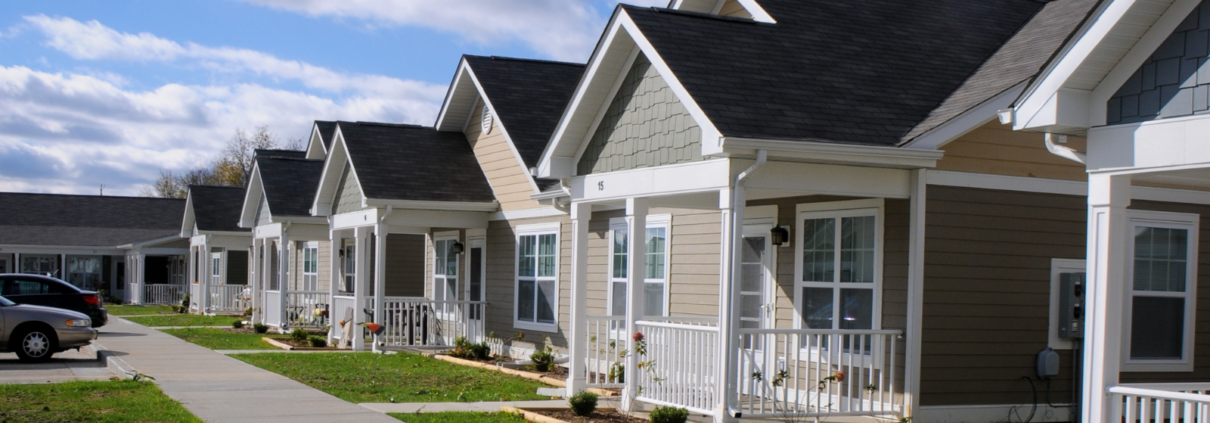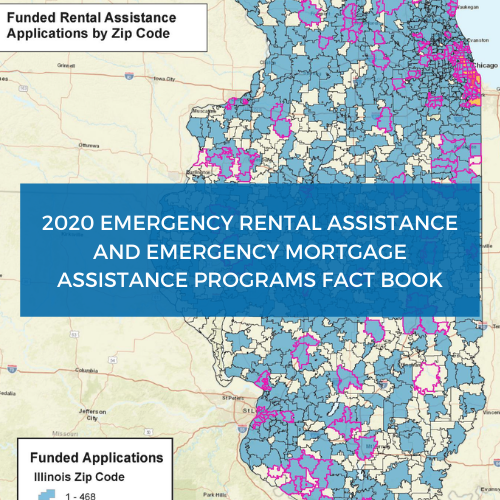
New Emergency Rental Assistance Case Study: IHDA’s 2020 Emergency Rental Assistance Program
The National Low Income Housing Coalition’s (NLIHC’) newest case study on Illinois Housing Development Authority’s 2020 Emergency Rental Assistance program illustrates how emergency rental assistance programs that are designed to be simple and accessible facilitate timely distribution of critical emergency funds to low-income households disproportionally impacted by the COVID-19 pandemic. Read the case study here!
COVID-19 and Housing
The economic fallout caused by the COVID-19 pandemic has highlighted the fundamental role of housing in keeping families safe, stable, and healthy. It has also exposed the longstanding housing affordability crisis that existed well before the pandemic, as well as the widening disparities in access to safe and affordable housing, especially for low-income households and people of color. As the public health crisis led to layoffs, furloughs, and decreased business revenues, the housing cost burdens many families were already experiencing became unmanageable, and many households were suddenly facing housing insecurity. Though Illinois quickly enacted moratoriums on evictions and foreclosures, direct financial assistance was needed to assist those who were accruing considerable amounts of back rent or missed mortgage payments after a COVID-19-related job or income loss.
Rapid Response
In May, the Illinois General Assembly directed over $300 million in federal aid from the Coronavirus Relief Fund to the Illinois Housing Development Authority (IHDA) to provide direct assistance to struggling renters and homeowners. In 60 days, IHDA launched the Emergency Rental Assistance (ERA) and Emergency Mortgage Assistance (EMA) programs to cover past due rent and mortgage payments, as well as future housing payments for the period of March 1 through Dec. 30, 2020. Approved renters received a one-time, $5,000 grant paid to their housing provider on their behalf, and homeowners received up to $25,000 paid directly to their mortgage servicer. The programs successfully delivered more than $325 million in emergency housing payments before the legislated deadline of Dec. 30, 2020.
CRF Program Impact
In six months of administering the programs, IHDA received 97,893 unique applications, 78,314 of which were eligible for review. By the end of 2020, IHDA was able to fund all eligible and complete applications, providing a total of $230.6 million in rental assistance to 46,129 households and $98.5 million in mortgage payment assistance to 10,071 households. While initial projections showed 30,000 renters and 10,000 homeowners would be served by the programs, IHDA assisted 53% more renter households than expected.
Building on the state’s commitment to assist families and communities with the greatest needs, over 67% of ERA funds and 50% EMA funds were awarded to applicants in zip codes that have been disproportionately impacted by the health and economic effects of COVID-19, exceeding goals mandated by the Illinois General Assembly. Ensuring assistance was provided equitably to underserved communities was a priority, and 67% of ERA funds and 56% of EMA funds were awarded to households who identified as American Indian, Asian, Black or Pacific Islander. Nearly 12% of ERA funds and 17% of all EMA funds were provided to applicants who identified as Hispanic/Latinx. In addition, nearly 20% of all program funds were awarded to applicants in areas outside of the Chicago Metropolitan Area.
2020 Illinois Emergency Rental and Mortgage Assistance Programs Factbook
 The Emergency Rental Assistance and Emergency Mortgage Assistance programs disbursed more than $324,000,000 in past due rent and mortgage payments helping keep over 56,000 households safe and sheltered at home during the pandemic.
The Emergency Rental Assistance and Emergency Mortgage Assistance programs disbursed more than $324,000,000 in past due rent and mortgage payments helping keep over 56,000 households safe and sheltered at home during the pandemic.
At the national level, the Illinois program is seen as a model. Most importantly, the large number of renters and homeowners served, and the large dollar volume pumped back into the Illinois economy helped keep vulnerable households in place at a time of a national pandemic.
To learn more about the program, please download the full EMA/ERA Factbook
Coronavirus Relief Fund Testimonials
2020 was a challenging year for all Illinois residents. However, the Emergency Rental and Mortgage Assistance programs provided relief that allowed 56,200 households to stay safe and sheltered at home during the pandemic.
We encourage you to listen to a few of their stories in the testimonials below.





















